The Ukrainian orthography is orthography for the Ukrainian language, a system of generally accepted rules that determine the ways of transmitting speech in writing.

The Vernadsky National Library of Ukraine, VNLU is the main academic library and main scientific information centre in Ukraine, one of the world's largest national libraries. Its main building is located in the capital of the country – Kyiv, in the Demiivka neighborhood.
National Academy of Educational Sciences of Ukraine is a scientific institution that was established in 1992 by the special decrees of the President of Ukraine and the Cabinet of Ministers of Ukraine.
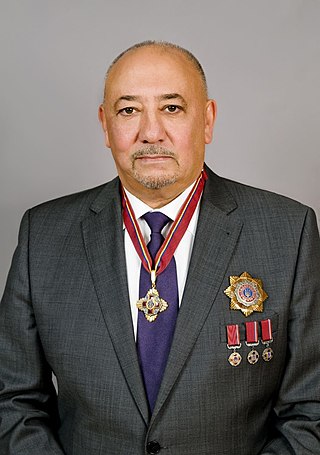
Yevgeny Lvovych Streltsov is a Ukrainian scientist and specialist in law and theology. He is Doctor of Law Sciences, Doctor of Theology, Professor, Corresponding Member of the National Academy of Legal Sciences of Ukraine, Honored Scientific Worker of Ukraine; Holder of 11 state awards, including: the Order of Merits of Ukraine of the 1st, the 2nd and the 3rd degrees, the insignia of the President of Ukraine – Medal “Twenty Years of Ukraine’s Independence, a son of Ukrainian law researcher Lev Streltsov.
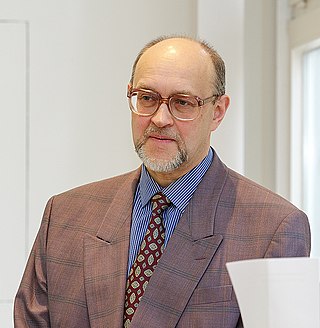
Volodymyr Potulnytskyi is a Ukrainian historian who specializes in European medieval history, Ukrainian political science, intellectual history, historiosophy and historiography of Eastern Europe.
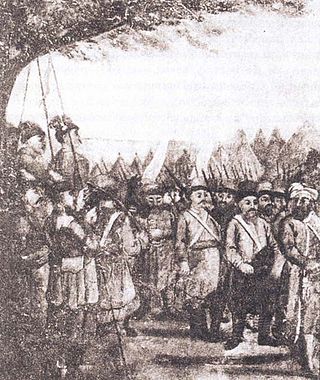
Serdyuk, or serdiukpl. serdiuky were mercenary infantry units kept by the Hetman's Zaporizhzhya Army from the second half of the 17th century through the first quarter of the 18th century and formed the Hetman's guard. Serdyuk recruited mainly from the Ukrainian population and the Kozaks of Cossack Hetmanate and Zaporizhian Sich. The average Serdyuk regiment consisted of 400-500 soldiers. They served at the border and inside the country, and guarded the Hetman's residence. By decree of the Russian Tsar on July 14, 1726, the convivial serdyuk's units were disbanded.
Watching the sky and thinking a thought is a song with lyrics written by Ukrainian romantic poet Mykhailo Petrenko in 1841. It was set to music by Lyudmila Alexandrova. Vladislav Zaremba arranged this song for voice and piano. This song became one of the first two songs sung in space: this happened on August 12, 1962, on board the spacecraft "Vostok 3 and 4" when the first Ukrainian Soviet cosmonaut Pavlo Popovych from Ukraine, who had previously been fond of opera singing, performed it at the special request of Serhiy Korolyov, a prominent Soviet rocket engineer and designer of spacecraft from Ukraine, which sent the first satellite and the first people into space. 55 years after the first performance of Ukrainian song in space, on August 12, 2017, the introduction of this day of Ukrainian Song Day was initiated.
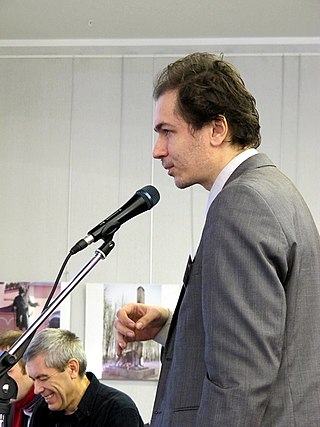
Andriy Ihorovych Bondarenko is a Ukrainian composer and pianist.

Samiilo Vasyliovych Velychko — was a Ukrainian Cossack nobleman and chronicler who wrote the first systematic presentation of the history of the Cossack Hetmanate.
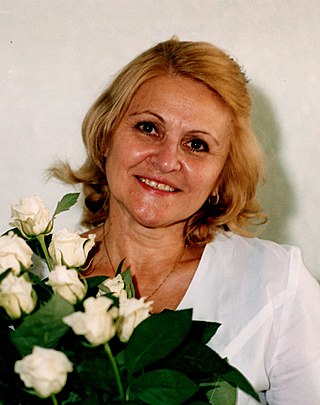
{{Multiple issues|
Ukrainian Academy of Sciences is a public organization that positions itself as an association of scientists and production workers of Ukraine. Founded in 1991. It is the legal successor of the Ukrainian Academy of Sciences of National Progress.
Yaryzhka or Orthography of Slobozhanshchyna is the name of the Russian pre-revolutionary orthography used to write and print works in the Ukrainian language in the Russian Empire. Yaryzhka included all the letters that were part of the Russian Cyrillic alphabet of the pre-revolutionary period: ы, ъ, and so on.
Arts of Ukraine is a collection of all works of art created during the entire history of Ukraine's development.
The History of Ukrainian literature includes laws of the historical and literary process, literary genres, trends, works of individual writers, features of their style, and the importance of artistic heritage in the development of Ukrainian literature.
Manifesto to the Ukrainian people with ultimate demands to the Ukrainian Rada is an official document of the Council of People's Commissars of the Russian Soviet Federative Socialist Republic, prepared by the Chairman of the People's Commissar Vladimir Lenin, People's Commissar for Foreign Affairs Leon Trotsky, People's Commissar of Nationalities Joseph Stalin.
Kharkiv University History Museum is one of the first history museums created at a higher educational institution in Ukraine. It is located on the second floor of the main building of V. N. Karazin Kharkiv National University.
Kostiantyn Hryhorovych Voblyi - Ukrainian economic geographer, scientist economist, professor of the Kyiv University, academician of the Ukrainian Academy of Sciences (1919), Vice-President of the Ukrainian Academy of Sciences (1928-1930), Director of the Institute of Economics. Honored Scientist of Ukraine (1944), awarded the Order of Lenin and the Order of the Red Banner of Labour.

The Third Universal of the Ukrainian Central Council is a state-political act, universal of the Central Council of Ukraine, proclaiming the formation of the Ukrainian People's Republic. Accepted 20 November [O.S. 7 November] 1917 in November in Kyiv.

Peter Mytrofanovych Kravchenko was a Ukrainian artist and public figure.
Hryhorii Vasylovych Tereshchuk - Ukrainian teacher, doctor of pedagogical sciences (1995), professor (1996), and corresponding member of the National Academy of Pedagogical Sciences of Ukraine (2003).










